Queen’s Marque, a 41,800 square mixed-use complex on Halifax’s Waterfront, was born from developer Scott Armour McCrea’s desire to build a significant Canadian landmark that would be created by Nova Scotians, for Nova Scotians.
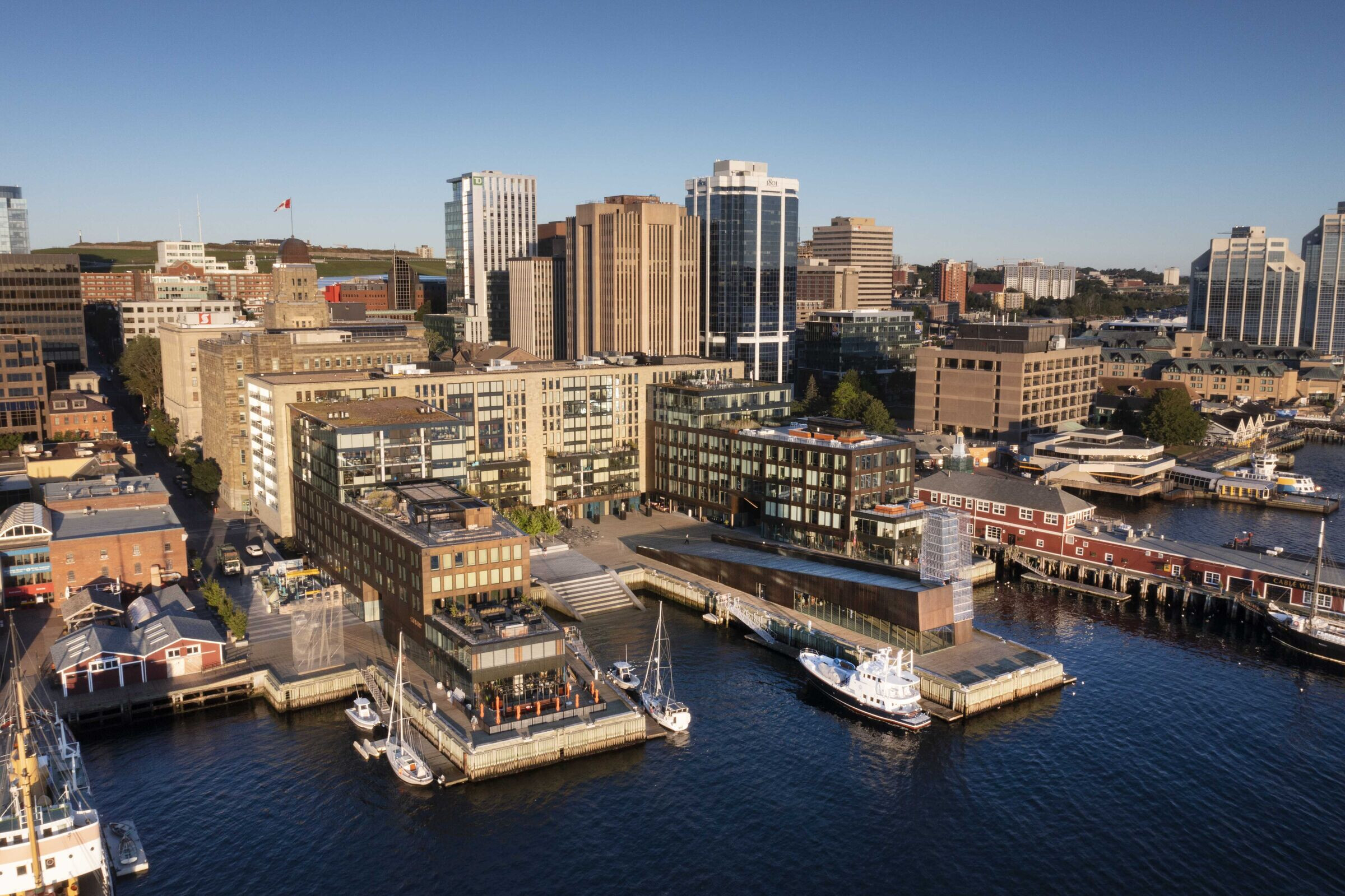
The Cheif Executive Officer of Armour Group Ltd (a Halifax based real estate and construction company), sought a legacy project that would epitomize a new confidence that is emerging in Eastern Canada. Through deliberate planning and sensitive design, Queen’s Marque instills pride in local history and culture, while making a difference in public life for generations to come.
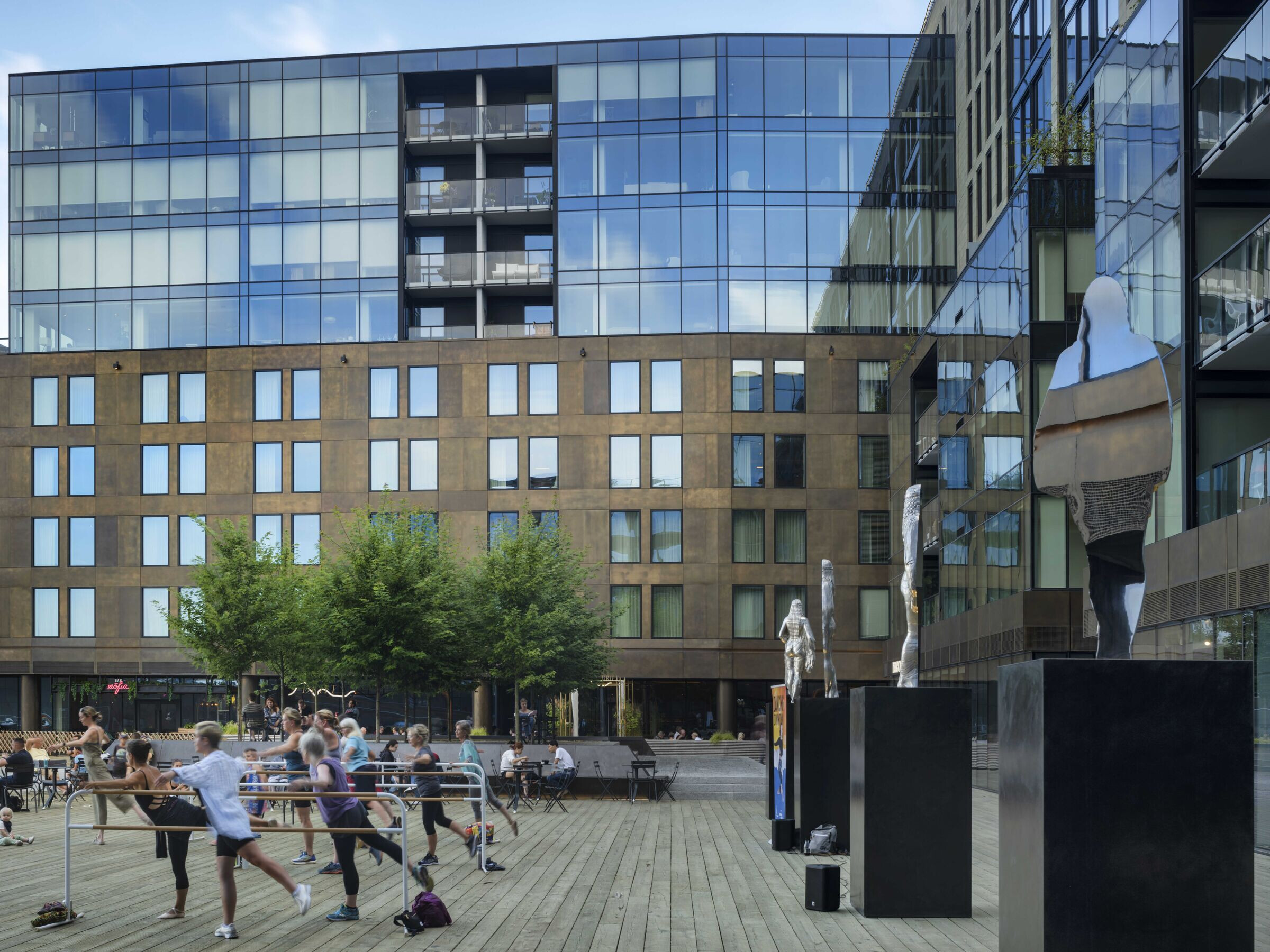
According to MacKay-Lyons Sweetapple Architects’ founder, Brian MacKay-Lyons, “Our goal was to create a ‘people place’. To us, this is a home on a larger scale, where the new central square is the public living room of the city. The idea of home is charged with meaning: it tells something about who you are, where you come from, and where you are going. That is the story for Queen’s Marque, but in
relation to this region, rather than an individual.”.
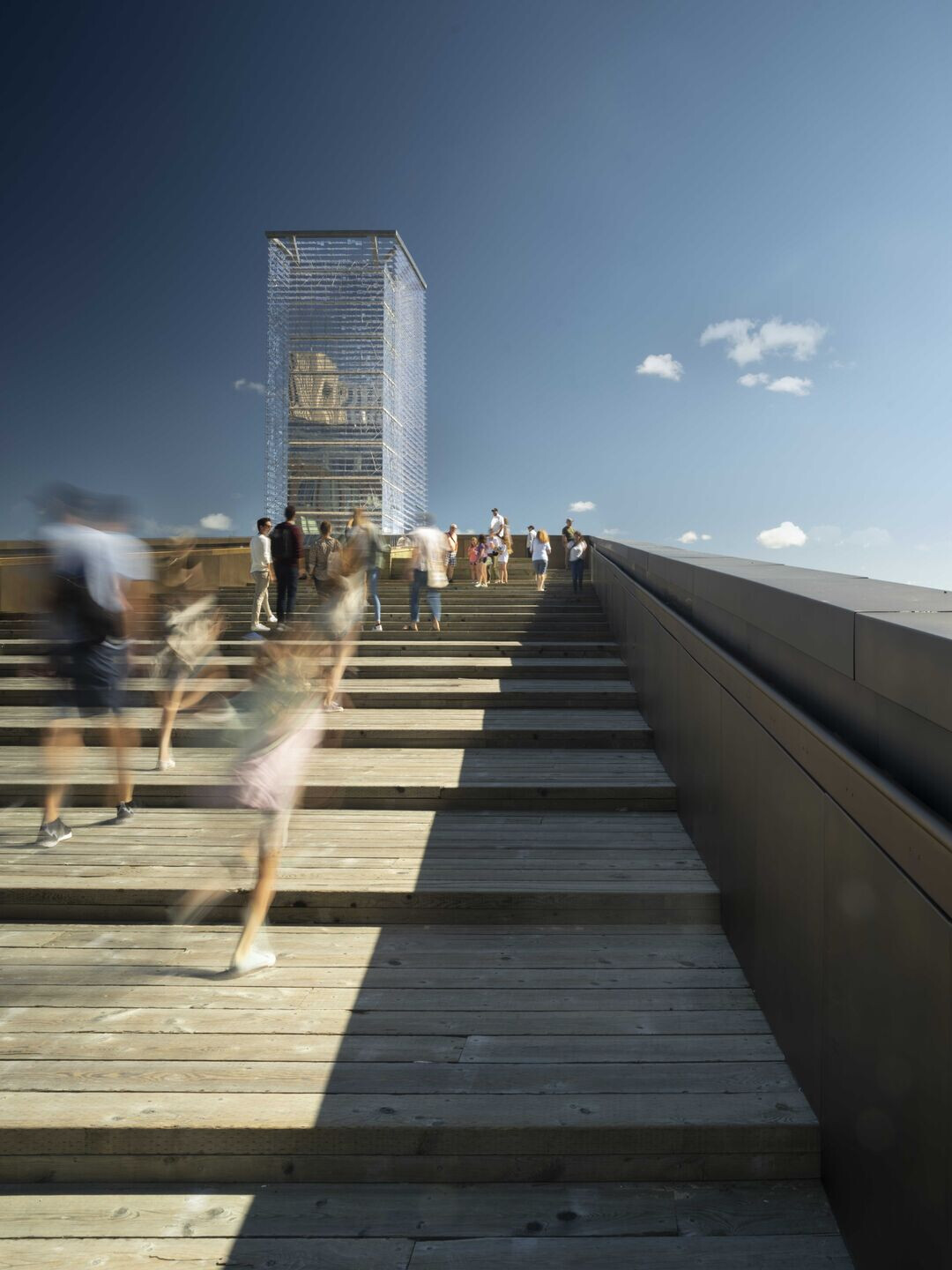
Queen’s Marque is conceived as a district rather than a building. It is about contributing to the urban fabric more than making architectural objects. The development was designed to enhance the skyline, without overpowering it, to frame views, while creating sheltering courtyards and welcoming public
spaces - all appropriate for the context. The design team began by moving the parking underground and developing a programming of mixed-use, including offices, a luxury hotel, shops, restaurants, and rental apartments to keep the site active 24/7.
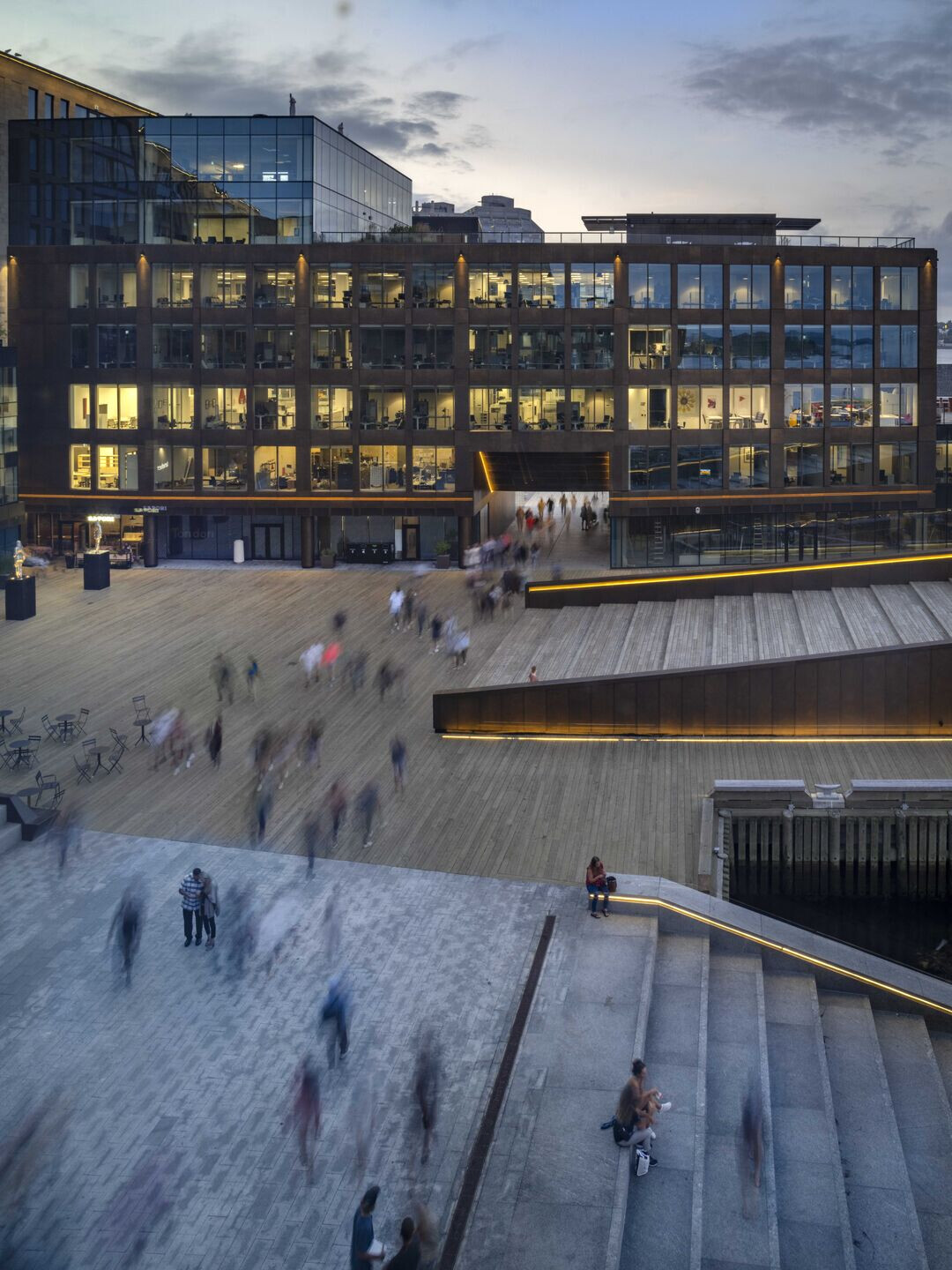
A “U” shaped, tripartite composition abstractly reflects marine forms, inspired by the historic ships that once sailed the Atlantic. Further, a sunken ‘hull’ serves as a metaphor for how the culture can reinvent itself. The configuration of the complex preserves views to the historic citadel, extends the civic grid to the water, repairs and completes the pedestrian boardwalk along the shoreline, establishes a protected micro-climate, and gives Halifax its first public gathering place along the harbour.
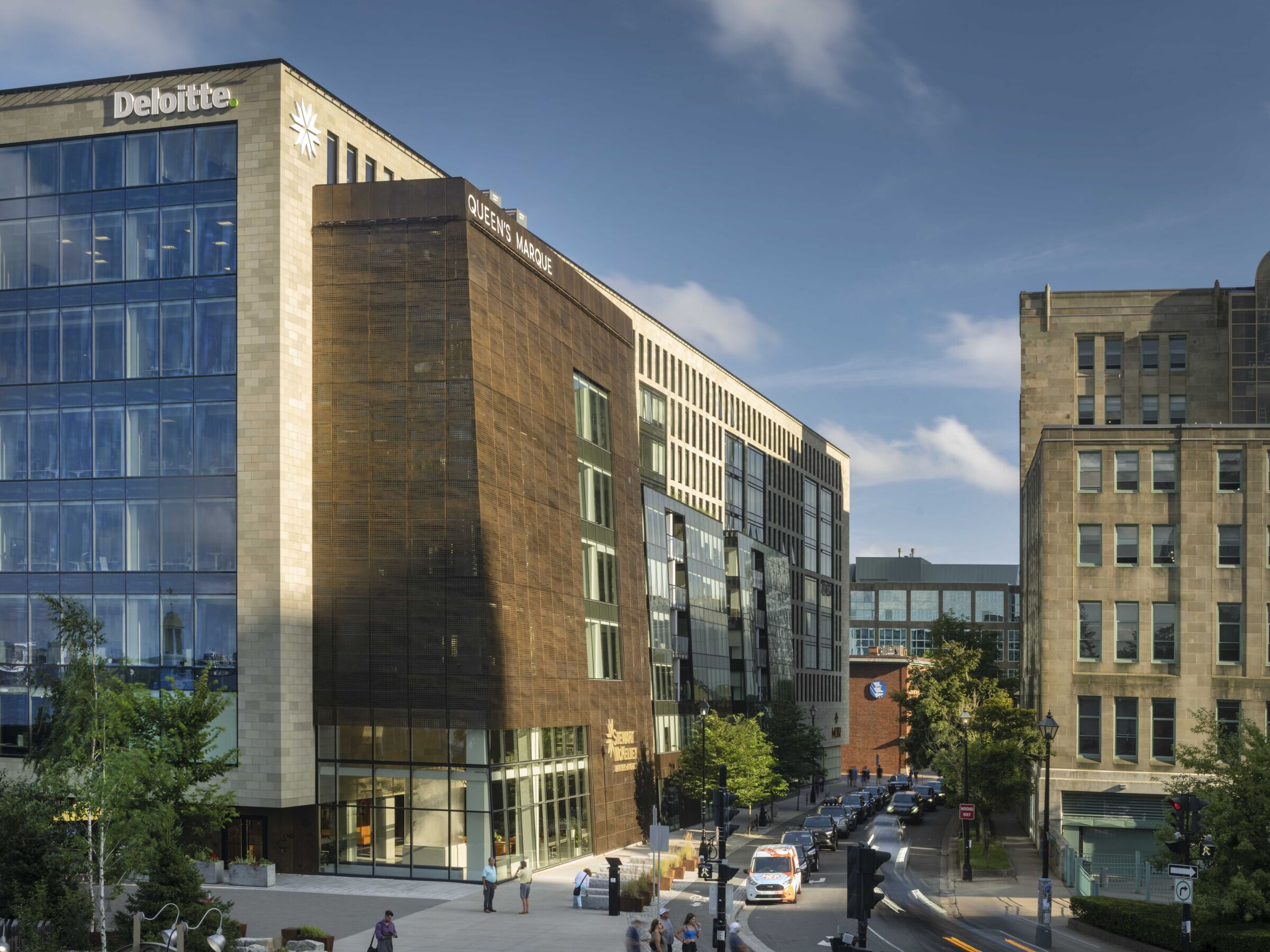
Pressing Queen’s Marque’s 107-metre-long sandstone building towards Lower Water Street, flanked by the two perpendicular buildings, the design opens up 70% of the site to open public space. This includes ‘The Lost Ship Bosque’, a gallery of maple trees, and the staircase (‘Rise Again’) leading up to the ‘Tidal Beacon’, the most prominent of the complex’s many art installations. Multiple passages through the buildings make the development highly porous to the public, even lending direct access into the water via a staircase (‘Queen’s Landing’) reminiscent of riverside staircases found in Rome to Fiume Tevere, Paris to La Seine, London to the Thames River and Ganges to Varanasi, India.
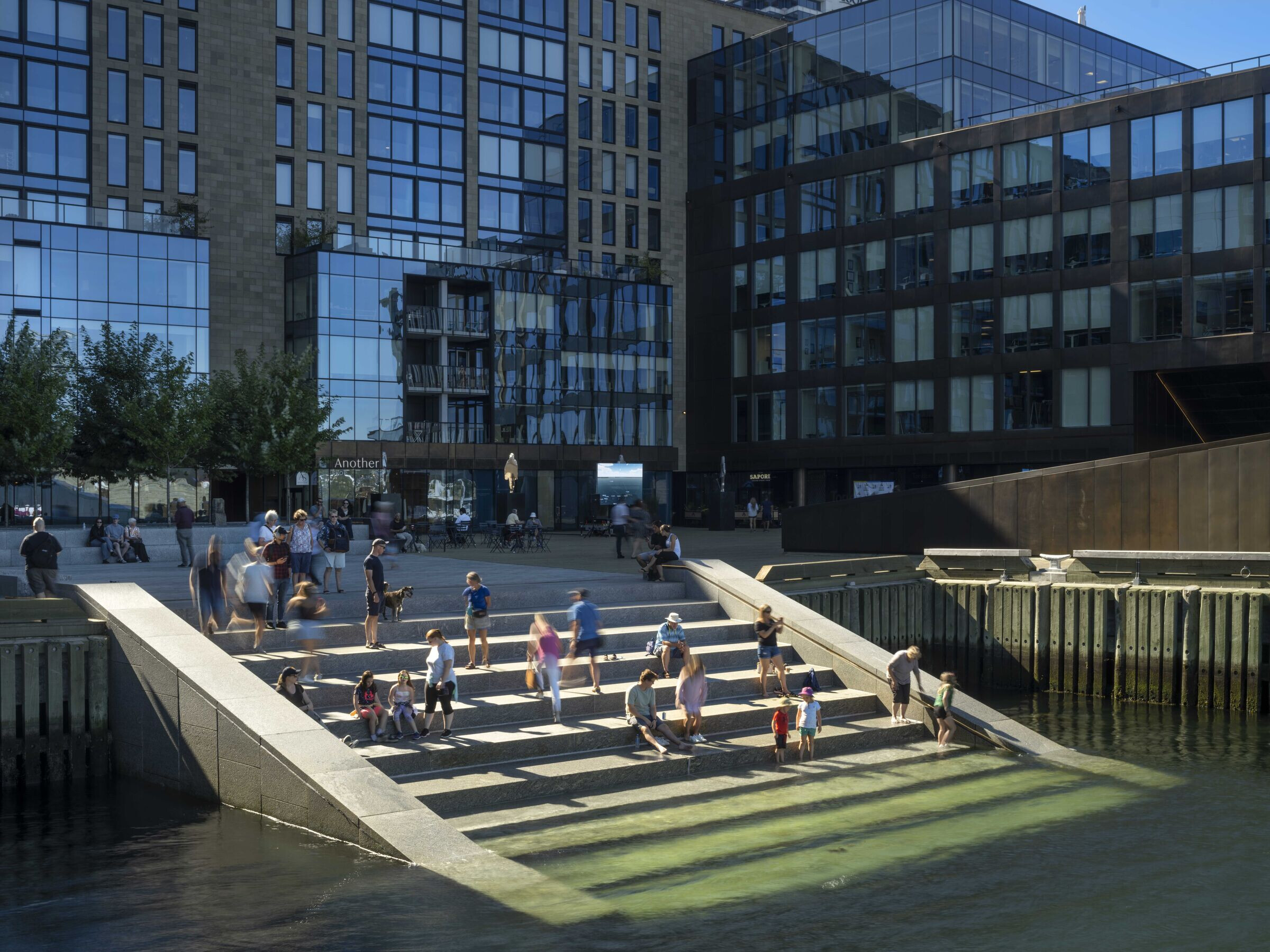
Materials speak to the local vernacular: sandstone coalesces with neighbouring institutional buildings; Muntz metal recalls 19th Century hull sheathing; and reclaimed cobblestone paving, hemlock boardwalks, as well as landscaping that reinstates the original shoreline drift – all articulated in a manner that sparks both pride and instills curiosity. Art is integrated into the development through both site-specific installations, exploring the harbour’s history and environmental phenomena. Queen’s Marque has been designed to meet a LEED Platinum Energy Model. With one of the most efficient and technologically advanced heating and cooling plants in the region, the development saves on cooling costs by using the frigid water of the harbour. Utilizing a seawater loop that extends 50-feet below grade, the building manages free cooling and heating regulation based on the temperatures of the seawater.

Other sustainable practices include the integration of green roofing materials and Low-E glass which minimizes solar heat gain of the building. These interventions combined have a significant impact on the building’s energy costs, as well as the site’s carbon footprint. In anticipation of sea level rise, the ground-level of the project has been raised, but not so much as to disengage with the surrounding pedestrian experience. This makes the project a precedent in environmental consideration for future developments of this scale.








































